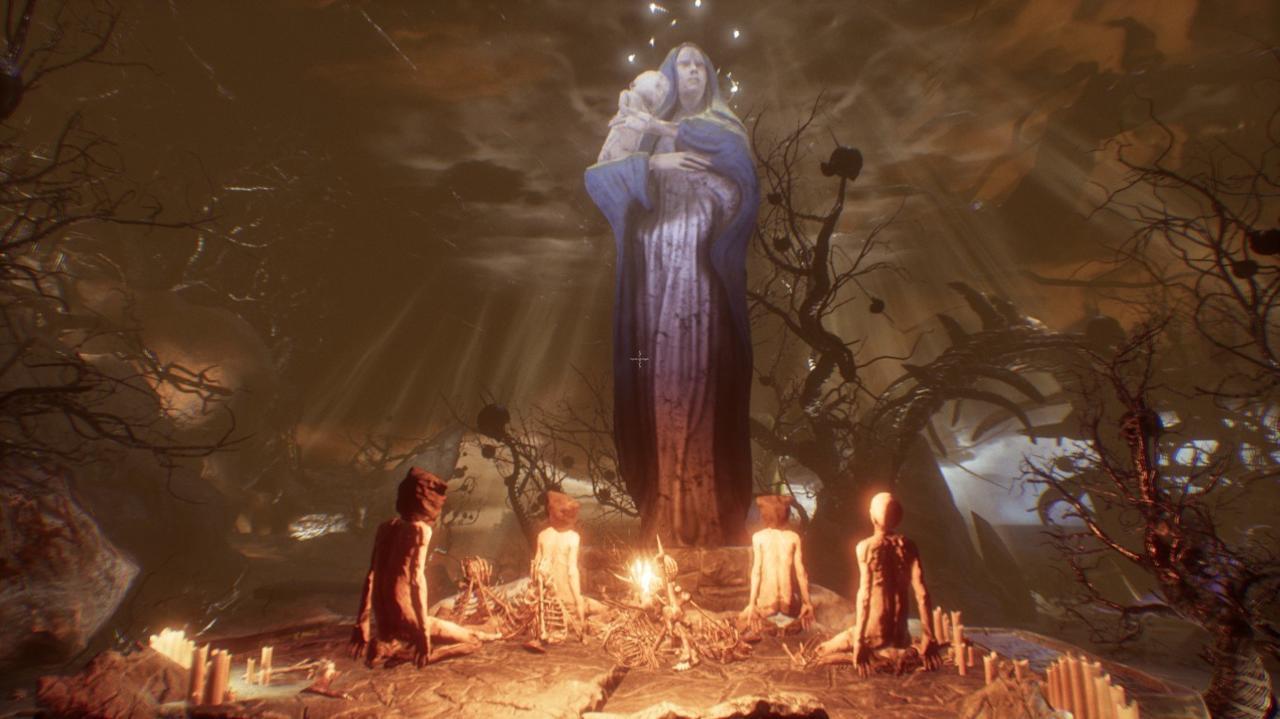
Agony Review: A Captivating Disappointment

Hell, by its very nature, shouldn’t be enjoyed, but there’s still something enthralling and entertaining in seeing creators imagine it in various ways. Agony, on the other hand, is less about Hell as a vehicle for entertainment or even fear. Agony’s version of Hell is simply a place of unimaginable horror. It is depraved beyond reckoning, a place whose very brick and mortar is composed of atrocities. It is a place that never opens its sick, emaciated maw except to blaspheme and torment. Hell is terrifying in Agony, which goes hand in hand with the fact that the game is also torturous to play.
In Agony, you are a freshly fallen wretch who wakes up at the gates of Hell with his memories–including his true name–burned away during the trip down. Under normal circumstances, it’d be torture time for the rest of eternity, but somehow, the new meat walks through the gates with most of his wits about him, and only one piece of knowledge: that Hell has a guardian angel, the Red Goddess. Only she can help him regain his lost memories, and help him escape perdition. So begins a long, arduous journey of survival horror–closer in function to Clock Tower or Alien Isolation than Resident Evil–to meet the Goddess, and beg for her dark blessing.
Agony’s single most breathtaking achievement is Hell itself. It is an enormous, heretical province of terror, the ungodly conceptual Venn diagram between Hieronymous Bosch, H.R. Giger, and Clive Barker. The very ground you wake up on in the game’s first level is made of rotting pink flesh, the mortar made from the crushed bodies and blood of the hideous unborn, a process a later cutscene even shows you in great detail. The architecture all around you is a pulsating gothic nightmare, cathedrals of wide-eyed corpses and skeletons, some of whom are still alive, trapped twitching inside for eternity.









It’s because the world itself is so impressive that the enemy design then comes across so disappointing and predictable. While beautiful in detail, demons look mostly like the typical Doom interpretation of demons, and female variants tend to veer closer to being strippers-with-sharp-teeth as opposed to something legitimately imaginative. The Red Goddess herself is a near constant source of eyerolls, mostly coming off as a bloodied burlesque performer, with an inappropriately over-the-top voice performance that wouldn’t be out of place in a commercial for a sex hotline. There are design elements that push the envelope–mostly centered around some truly unsettling perversions of genitalia–but the game’s ham-handed attempts to be sexy, even in a sinister manner, is incongruous with the skin-crawling nature of the rest of the game.
All the wretched humans shambling around Hell–you included–are little more than desiccated revenants. You can walk–or, more accurately, shuffle along at a snail’s pace–perform a limited sprint, and jump. There are no weapons to be had, though you can pick up torches, which provide light, but little else. When you come across an enemy, you have only three options: run or hide. You can technically sneak around, and there’s even a power-up to be gained later that supposedly lessens the noise you make. It is still very, very easy to be heard and seen, hiding spots aren’t always close by, and aside from a rising musical sting, there’s no indicator of where exactly an enemy is in relation to you.
There’s only a few different classes of enemy you see throughout your play time, ranging from swarms of insects to Lovecraftian behemoths that can snatch up your soul. With only a couple of exceptions, getting caught by an enemy is typically a one- or two-hit death. As such, an hour’s work can be flushed down the toilet just by hitting the wrong enemy in a group. Later on, you can actually possess a few classes of demon, but this is never as empowering or thrilling as you might expect. Agony doesn’t seem to know how to capitalize on its most promising aspects.
You do, however, have one big trick up your shriveled sleeve: if you should die another death in Hell, your soul can actually fly out of your current body, and forcibly possess another. That’s only if you can find a vulnerable victim, though, and pull off the black shroud preventing them from being possessed. Otherwise, after about 10-15 seconds of being dead again, your soul dies a true death. The trick of it is not just finding the last person you unshrouded, but typically finding them in a maze, with an extremely limited and obscured field of vision while disembodied. If/when you die, the Goddess keeps you in Hell, though, and sends you back to the last checkpoint. Even then, checkpoints are a whole other problem. They’re represented by a special mirror, where a soul must be sacrificed, but the mirrors are hidden deep in each level. Agony treats basic progressional milestones the way most games treat obscure collectibles.
The checkpoint issue is one tiny facet of the game’s overarching issue: Hell is too big for its own good. Your one navigational tool, the Destiny Lines, sends out a little neon cluster of lights that can point you in the right direction, but often the cluster gets just as confused as you are, leading you through walls or ceilings, instead of along a proper route, which can be difficult to discern in the chaotic and painfully dim environments. In addition, on the game’s default difficulty, the Lines are a limited resource. The idea here is sound, if the idea was, in fact, to make surviving in Hell feel like a Sisyphean struggle, wandering a realm that mortal men have no mastery over. It doesn’t make for an enjoyable experience.
When you’re not losing chunks of progress, the rest of the game pits you up against two types of glorified scavenger hunts: collecting a small number of important objects and arranging them in a very specific way to open a door, or finding the correct sigil among dozens written in the environment that will unlock the next area. The first kind is usually easy enough, though oddly, the most difficult one in the game is right at the beginning, where you’re thrown into an expansive labyrinth full of enemies, and no way to save your progress when you’ve grabbed any of the resources you need to continue. Others are easier, but still more of a trudging annoyance than anything. The second kind involves exploring around to find the sigil, often involving backtracks into dangerous areas, only to get back to the door and discover the sigil you picked up doesn’t unlock your door. This kind of slow and infuriating repetition typifies Agony from start to finish.
These are issues ironically exacerbated by the fact that it’s all taking place in one of the most abominable, depressing, and fundamentally disgusting environments imaginable. Worst of all, you grow numb to Agony’s uniquely repulsive flair over time. You start thinking about the environment in practical nonplussed terms, instead of the grim wonder that strikes you in the beginning. Distress turns to disinterest, then–even as the bigger revelations about the protagonist and the nature of his torture come to light–turn to total apathy. I entered Agony’s Gates of Hell with a slack-jawed gasp. It is such a disappointment to have to have left it with a shrug.
Source:: GameSpot Reviews



















